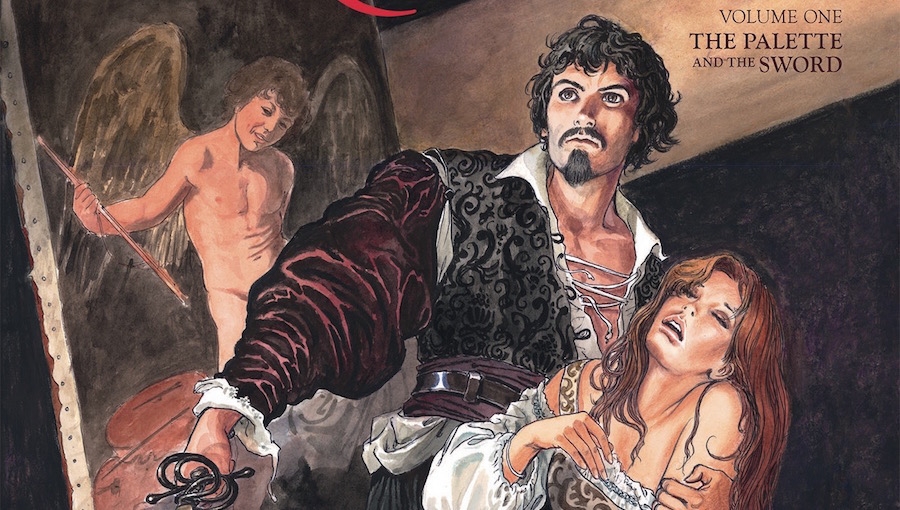Like a Hollywood bio-pic Milo Manara tackles the life of the genius artist Caravaggio, giving us explanations of what inspired his greatest works and who his female muses were, as well as his greatest adversaries. In the end, however, the story presented by Manara feels more like an explanation of events than an actual story.
For me there are two types of basic stories, plot driven and character driven. Plot driven is when there is a goal that needs to be attained and so the characters press forward to do whatever they can to attain that goal; their fates are directed with the intention of completing said goal. Character driven is when a character pushes a story forward through their own actions, oftentimes creating their own situations that need to be solved. Very simple. Following one of these two guidelines helps create drama. Now, instead of presenting a story, you can also represent a story. Generally, this comes into play in more artistically fashioned stories like the films by Alejandro Jodorowsky, and they can be absolutely splendid. Ideas are symbolic and metaphorical, the emotional reactions evolve in the viewer as ideas are presented and juxtaposed. These work on a more personal and intimate level that some will get and some won’t.
Unfortunately Manara’s Caravaggio works on none of these levels. Instead, we’re presented a series of moments that neither dramatically nor symbolically fit together. They are instead supposed to paint a picture of the artist. If this is the case he was a pretty generic being, everything you’d expect from the whimsy of a Heavy Metal comic from the early ’80s. As presented he’s hardly a human being, rather he becomes a ball of gusto, reacting to this situation and that situation without nuance, intelligence nor emotion. The same can be said for the supporting cast: the women that roll in and out of his life are beautifully drawn, but lack substance. I guess that can be said for the comic as a whole. He was obviously a brilliant artist, but the book jumps around so much, giving far too brief insights into each moment, and the dialogue is entirely too lifeless and on the nose that we’re never truly able to connect.
I’m sure in many instances the facts are correct. If so there are a lot of interesting things that occurred in Caravaggio’s, but a story can’t read like the description of a painting on a museum wall.
Where Manara does succeed is in creating a time and a place: Rome 1592. His landscapes, the city, all of it tells a greater story than the one presented. As usual, Manara likes to draw lady’s naked butts. There are a lot of naked lady butts in this book, which doesn’t help when trying to take it seriously.
In the end, aside from a few moments, the first 5 pages of the book are more interesting and entertaining than anything that’s to come after, because there is a clear arc to the situation, a beginning, middle and end with consequences and character development. The next 62 pages not as much.

